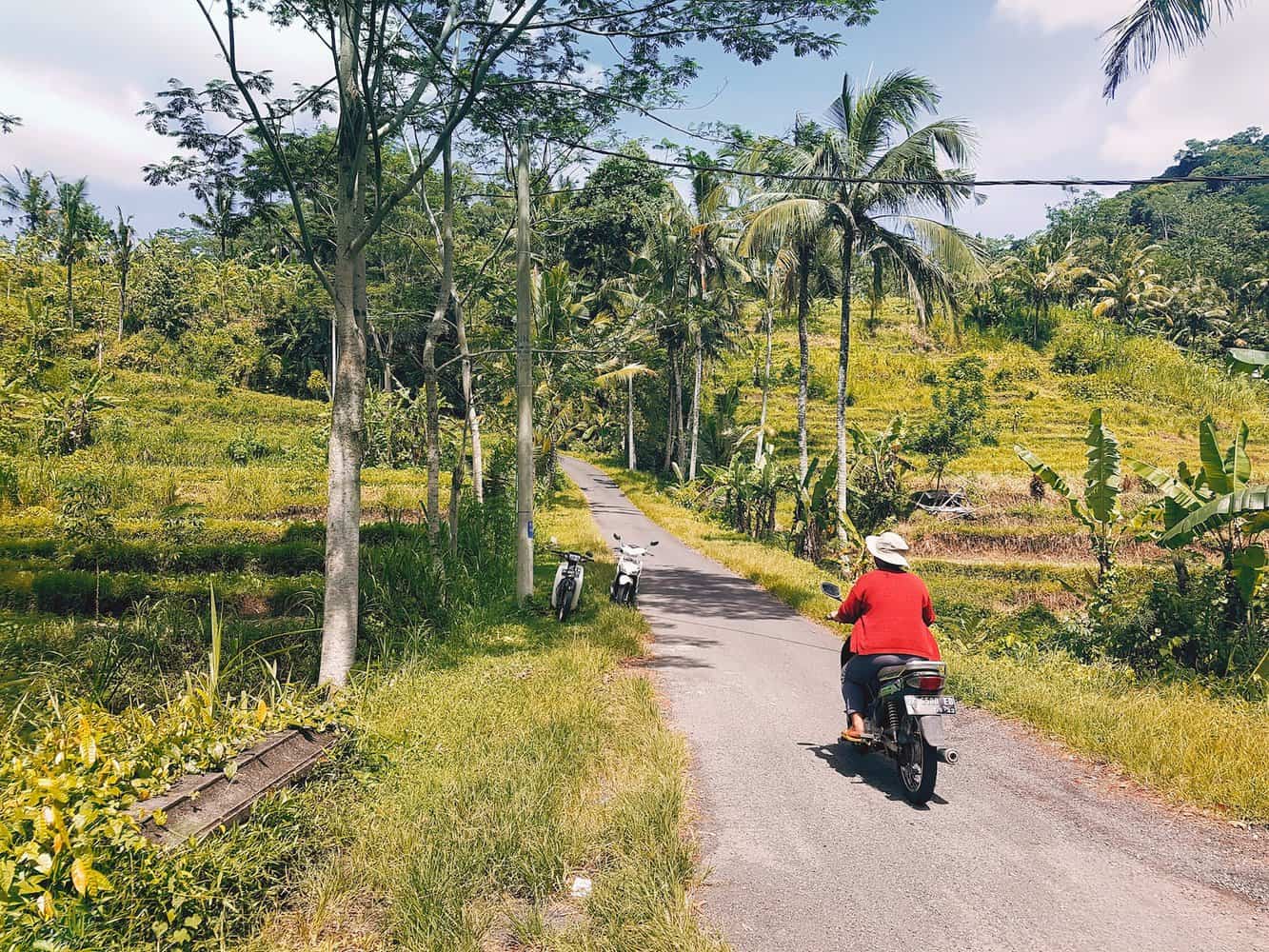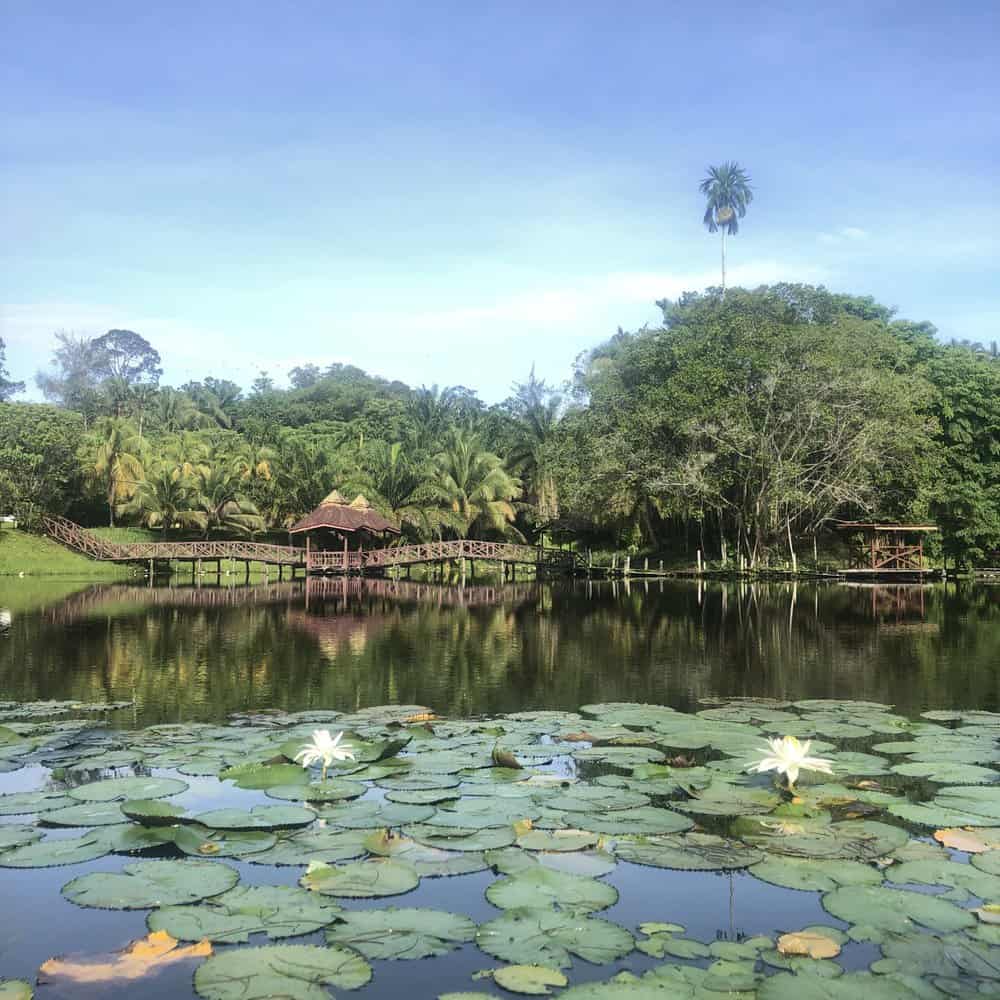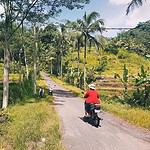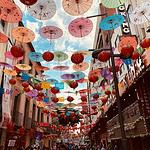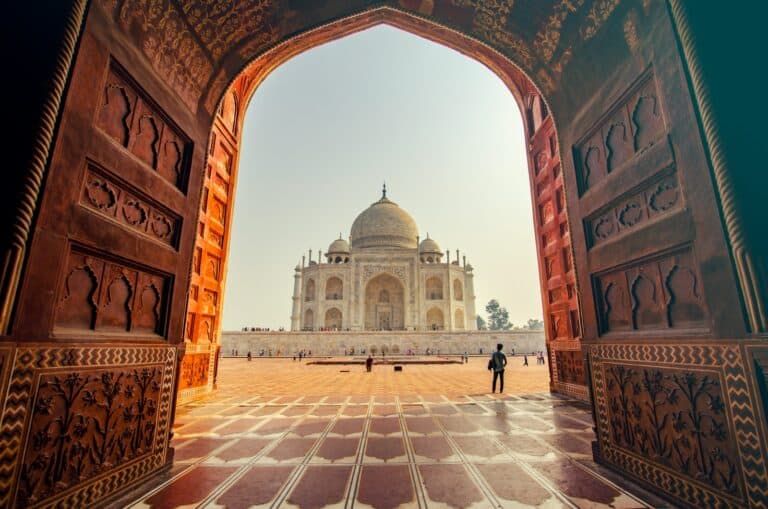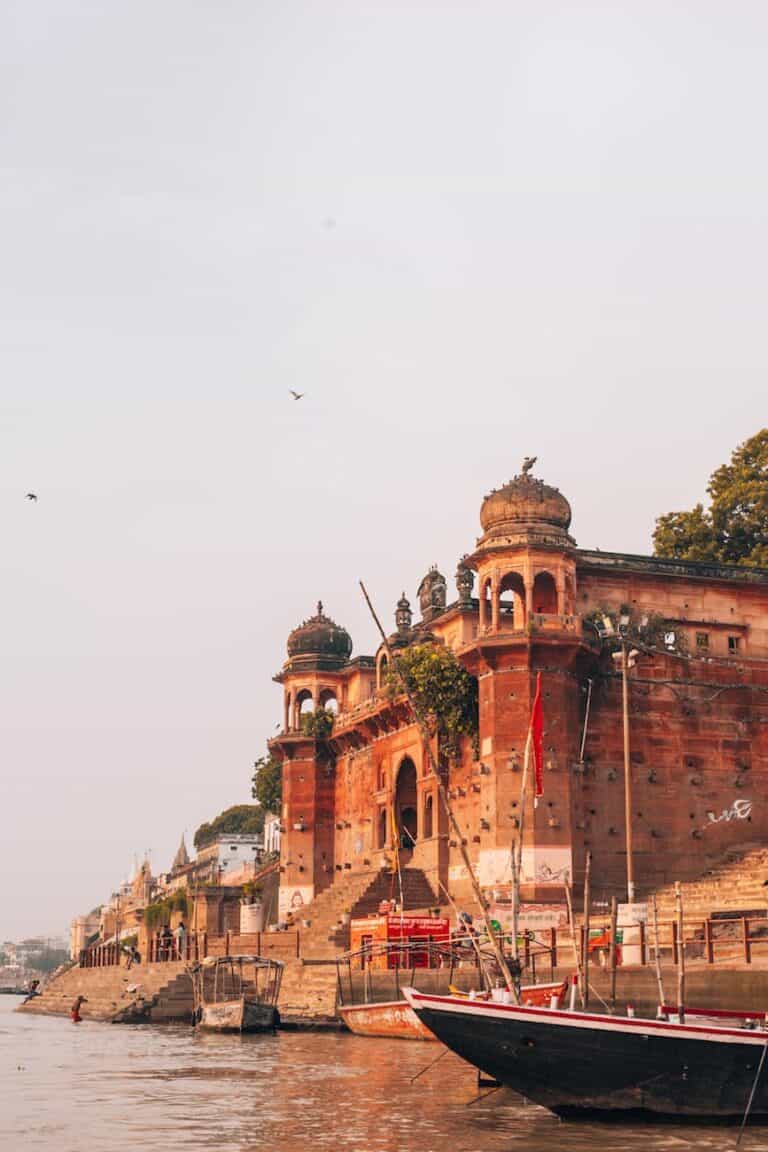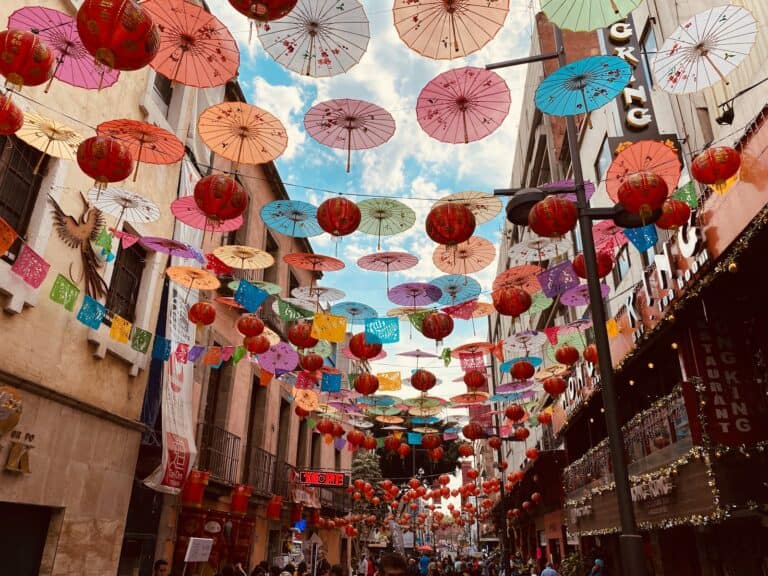How To Plan an Epic Budget-Friendly Trip to Southeast Asia
Are you looking for tips on how to plan a budget-friendly trip to Southeast Asia? We’ve got you covered.
Budget travel is all about balance. Be frugal where you can so that you can reap the rewards later! AND travel for longer—that’s the goal, right?!
In 2016, I embarked on a nine-month trip around Asia. I ventured everywhere, from India to Indonesia. In that time frame, I only spent £6K! This figure sounds crazy to me now, with prices worldwide being hiked yearly!
Travelling on a budget was sometimes tricky, and I missed some luxuries. However, I also didn’t hate this lifestyle; I fell in love with it. It was very freeing to escape from such a materialistic hometown and live mindfully. It changed me a lot for the better.

The world has changed a lot since I did this backpacking trip, and as I continue to travel, I notice an increase in prices each year. However, I believe it can still be done if you are frugal and careful and have the right advice and tips! So that is where we come in.
In the past ten years, Southeast Asia has become a very popular travel destination for people worldwide. Growing up, I had never even heard of Cambodia or Vietnam, but now all I have to do is open social media and see another person from my hometown jetting off to explore it.
SEA has much to offer, including various terrains, landscapes, cultures, people, and cuisines. I return yearly because Aisa tends to steal a place in your heart.
Planning a budget-friendly trip to Southeast Asia can be overwhelming, with many countries and endless accommodation options, transportation, and activities. So, this is a guide to help you uncover my tips and tricks for budget travel!
This guide summarises the essential steps to help you plan a budget-friendly trip to Southeast Asia.
We have covered you by choosing the right time to visit, finding affordable accommodations and transportation options, budgeting for activities, and determining a daily budget. These tips allow you to enjoy a fantastic trip without breaking the bank.
Table of Contents
Why visit Southeast Asia?
Southeast Asia has diverse cultures, stunning landscapes, and delicious food. Each country has its unique charm and offers something different to visitors.
Vietnam is known for its bustling cities, incredible street food and beautiful beaches; Thailand is famous for its temples, vibrant nightlife, and tropical islands; Cambodia is home to the magnificent Angkor Wat temple complex and its friendly people; and Indonesia has a variety of experiences from the hectic city of Jakarta to the tranquil beaches of Uluwatu, Bali.
Moreover, Southeast Asia is relatively inexpensive compared to other travel destinations. It offers affordable accommodations, delicious street food, and cheap transportation options, making it ideal for budget travellers.
How to plan a budget-friendly trip to Southeast Asia:
There are several essential steps to remember when planning a budget-friendly trip to Southeast Asia. Let’s run through them.

Choose the right time to visit:
The best time to visit Southeast Asia is during the dry season, which typically runs from November to April. This period offers pleasant weather with less chance of rain and lower humidity levels, making it perfect for outdoor activities and exploring.
If you want a more budget-friendly option, consider visiting during the shoulder season around April or October. Although you may encounter some rain showers, you can still enjoy most activities and accommodations at a lower cost.
However, this is also peak tourist season, so expect higher prices and larger crowds. The opposite is true for Bali, with its dry season from April to October!
So, thoroughly research before deciding the best time to visit each Southeast Asian country, as some may have slightly different weather patterns.
Research and compare flight options:
Research and compare flight options at least six months before departure to find the best deals. Consider flying into significant hubs such as Bangkok or Kuala Lumpur, which offer more affordable flights than smaller airports.
Use sites like Kayak or Skyscanner to get the best and cheapest flight deals!
Be flexible with your travel dates and consider booking separate one-way tickets instead of round-trip tickets to save money. Watch for promotions and sales from budget airlines operating within Southeast Asia, such as AirAsia or Tiger Airways.
Remember to factor in baggage fees and any additional charges when comparing flights. For cheaper options, consider flying on weekdays instead of weekends.
TOP TIP: I have found that Tuesday and Wednesday are generally the cheapest days to fly! This is because businessmen will fly on Monday and Friday and holidaymakers at the weekends!
Look for budget-friendly accommodations.
Southeast Asia offers various accommodations at various price points. Hostels and guesthouses are the most budget-friendly options, with dorm rooms starting as low as USD 5 per night!
The cheapest hostel I paid for in India was as low as $2 a night! It was pretty wild and definitely an experience to travel like this, but it was totally doable to save the extra pennies!
You can also find affordable private rooms or homes on platforms like Airbnb or hotels on Booking.com or Agoda.
If you prefer a more traditional stay, look for homestays or guesthouses run by locals. These options provide a unique cultural experience and are often more affordable than hotels.
Camping and Couchsurfing are also budget-friendly alternatives, especially in less touristy areas.
Consider working or volunteering!
These days, the absolute best way to travel slowly is by volunteering in exchange for free accommodation or food! Sites like Workaway or Worldpackers offer incredible opportunities to experience local life while travelling and becoming part of the community simultaneously!
There are 1000’s of opportunities, from working with animals (my go-to) to hospitality, art and design, construction, farming or teaching! There is always something for everybody.
I have worked away and volunteered in Spain, Greece and Bali. The places you work begin to feel like home, and with the money you save, you can stay for highly long periods on little to no money!
Travel SLOWLY!
My next point is equally as important as my last. The way I managed to travel so often is because I learned the art of slow travel.
Slwo travel is all about what it says on the tin. I have found that my budget always used to skyrocket the more I moved around, as nightly accommodation and transport to and fro, would pile up!
The most money I’ve ever saved when travelling was by opting to spend one month in each place. This is easy in places like Bali, where you can easily rent for one month and explore the island on day trips. However, it is not as easy in larger places like Thailand.
Staying for one month often gives you a discount on accommodation. You can even look at sites like Trusted House Sitters, which allow you to stay in people’s houses for free in exchange for looking after their pets!
If this interests you, I have guides on Slow-Living cities and Countries for Slow-Living lifestyles!
Consider alternative transportation options.
Transportation within Southeast Asia can be inexpensive, but it’s essential to research and compare different options.
Buses and trains are the most common modes of transportation, with tickets starting at a few dollars. However, they may only sometimes be the most convenient or comfortable option.
12GO is our go-to app for booking travel within Southeast Asia!

Consider using budget airlines for longer distances or taking overnight buses or trains to save on accommodation costs. I once took a 30-hour (yes.. 30 hours) bus from Vietnam to Laos to save about $100 off a flight… this is the kind of sacrifice you need to make if you want to save big and travel for longer!
Ride-sharing apps and local taxis can also be affordable options, but negotiate prices beforehand. Avoid taking taxis from tourist spots or airports, as they will most likely overcharge you! Instead, walk a few blocks away to find a cheaper ride.
Budget for activities and experiences:
Southeast Asia offers a variety of activities and experiences for all types of travellers, from free walking tours to adrenaline-pumping adventures.
Research and prioritize the activities you want to do, but also leave room in your budget for spontaneous experiences. There will always be unexpected day trips you want to take if you meet a group of people or find yourself somewhere unexpected that you can’t wait to explore!
There’s nothing worse than not being able to do things that you want to because of your budget. By cutting down on costs where you can, like accommodation and food, you can save your spare pennies for a rainy day and put them towards unforgettable trips!
Consider purchasing tickets in advance or getting a group discount for popular attractions. Look for free or low-cost alternatives like visiting local markets or taking a cooking class.
Also, take advantage of happy hour deals and street food to save on meals and drinks. And remember to budget for souvenirs and tips for tour guides or service staff too!
If you are blessed enough to be a woman and still drink, you can save a ton of money when going out in most places by opting for “free entry or drinks for women bars,” which I found a lot of in Thailand!
Determine a daily budget:
Based on your research and planned activities, determine a daily budget that includes accommodation, transportation, food, and activities. Remember that this can vary depending on the country you’re visiting and your travel style.
For example, I will budget X amount for accommodation each month and then try my absolute best to stick to my daily budget. Then, I will always try to hover around $5-$10 a day for other expenses such as food, transport, etc.
If I spend less than one day, I can treat myself another day! Budget travel is all about balance. Being frugal where you can so that you can reap the rewards later!
Having a buffer for unexpected expenses or splurges is always a good idea, but stick to your budget as much as possible. Record and review your daily spending to adjust accordingly if needed.
Don’t Forget Your Travel Insurance!
Get covered whilst abroad!
With Safety Wing, you can enjoy flexible month-to-month payments and freedom from lock-in contracts, perfect for free-spirited Nomads!
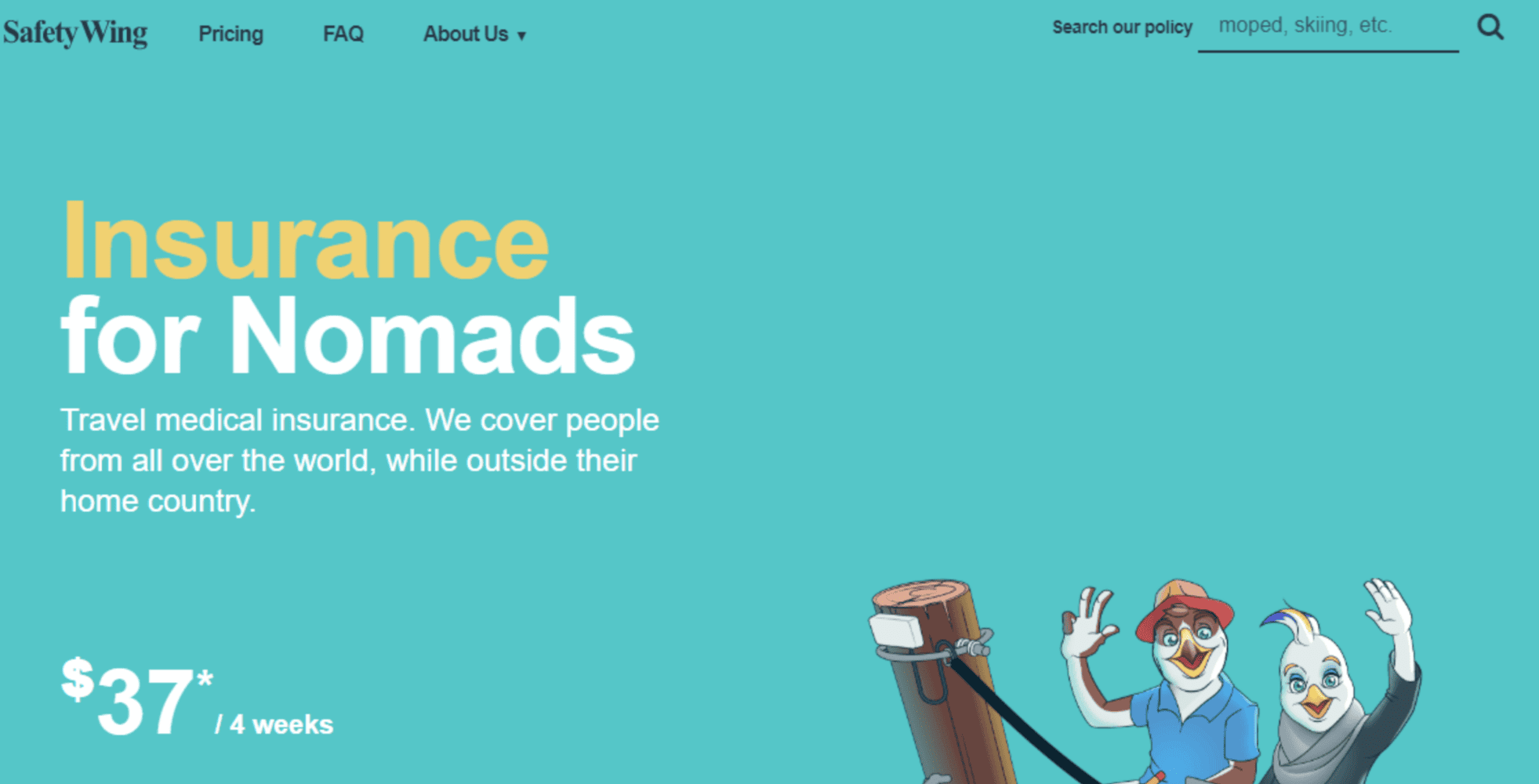
Keep track of expenses during your trip:
To stay within budget, keep track of your expenses throughout your trip. You can use spreadsheets or even download an app to help you monitor your spending.
TIP: Splitwise is an incredible app to track what you owe if travelling in a group or with friends! I found this last summer and have used it for every trip since! (Not an AD!)
Pay for most things with cash and exchange money at reputable places to avoid being overcharged.
BE CAREFUL about money exchange scams! Unfortunately, they are everywhere. Avoid changing money at kiosks on the side of the road. They often rip you off and hide the money you were supposed to receive.
If you travel with others, consider splitting costs like transportation or accommodations with people you meet to save money! I did this with 12 of us on the journey from Thailand to Laos!
We ended up travelling for months together, and it was, no doubt, the best time of my life. Made friends for life.

Don’t let the end of your trip be the end of your financial planning, too! Continue tracking your expenses even after returning home to see where you may have overspent or where you could have saved money.
Budget travel has allowed me to see the world for less and helped me save money and invest in all areas of my life! I like meeting people from all over the globe, talking about business and investing ideas, and even collaborating! It helped broaden my horizons when it came to money and savings.
Should I tip in Southeast Asia?
My simple answer is YES! In many Southeast Asian countries, tipping is rare, and in some other areas, it is expected. However, I believe tipping in SEA is not just recommended but a NECESSITY!
Remember, the people serving you are most likely earning next to nothing and have a large family to provide for! Tipping even $1 may be nothing to us, but it could make their day and help them feel their family!
If you decide to tip, consider the local customs and culture of the specific country you’re visiting. In some places, a small amount is appreciated, while in others, it may be considered rude or offensive too!
Tipping Tip! I would always tip around 10% of the service you have bought; this seems like a general all-rounder!
Some restaurants and hotels may include a service charge in the bill, so check before leaving an additional tip. For services like tour guides or drivers, you can offer a small amount as a thank you if you feel they have done an exceptional job.
Ultimately, tipping is a personal decision and should not be expected unless mentioned explicitly by the service provider.
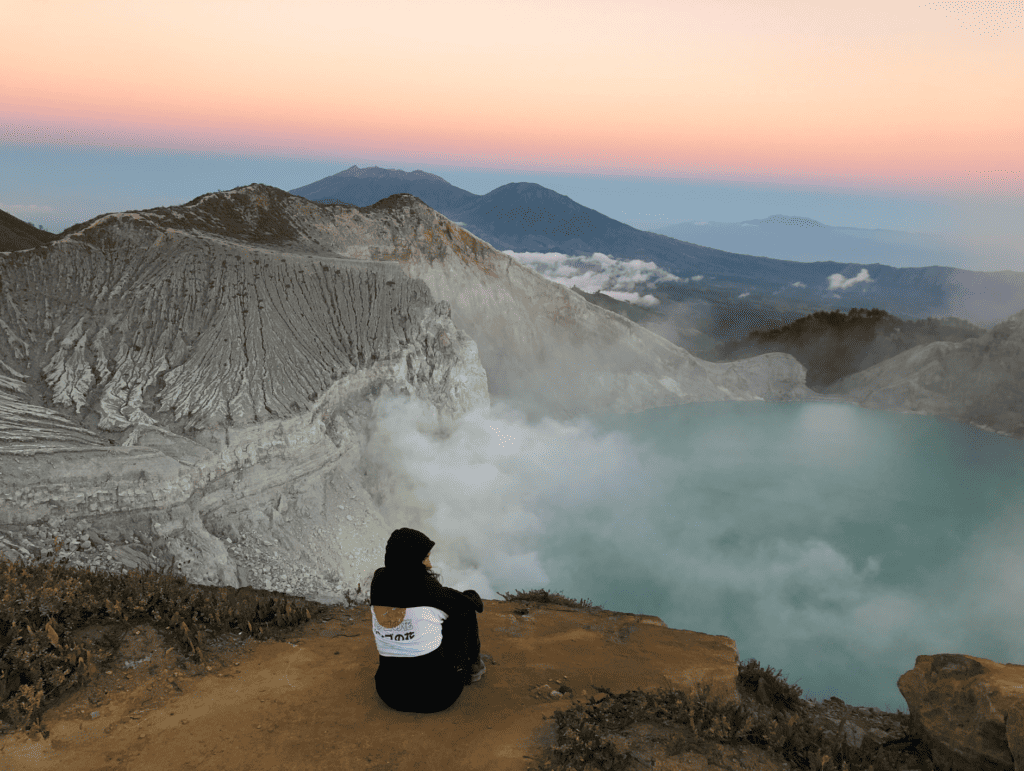
Also, remember that bargaining is common in markets and street stalls throughout Southeast Asia. Don’t be afraid to negotiate for a lower price, but always do so respectfully and with a smile.
Remember: The goal is not to get the cheapest price possible but to reach a fair price for both parties involved!
How much should I budget for a trip to Southeast Asia?
The cost of a trip to Southeast Asia can vary greatly depending on the country you’re visiting, your travel style, and the duration of your trip.
When I’m travelling on a budget, I usually budget around $20 max a day. I can spend anywhere between $3-$10 on accommodation and between $5-$15 a day on food and activities, depending on how much I want to do that day!
If there are lots of temples to explore that you have to pay to visit, then I will naturally spend more of those days than when I just lie around the pool or beach!
However, as a general guide, budget travellers can expect to spend $20-50 USD daily on accommodation, food, transportation, and activities. This amount may increase if you prefer luxurious accommodations and private rooms or plan on doing more expensive activities.
That being said, I do know people who travel on even less! Sometimes $10 a day! I love the Broke Backpacker’s guide on how to travel for $10 per day! He has excellent tips for super low-budget travel!
To save money, consider travelling during the low season and avoiding popular tourist areas. You can also opt for budget-friendly accommodations like hostels or homestays and try street food instead of dining at restaurants.
In some places, limiting your alcohol consumption can also keep costs down significantly in places like Indonesia, where the alcohol price is nearly Western prices!
That being said, when I was travelling Cambodia and Thailand, a triple vodka Coke was cheaper than a single vodka Coke! Because the alcohol there costs less than water or imported soft drinks! Gret for the budget.. not so great for the liver… I’m glad my partying days are over for now.
ALSO: Remember to leave room in your budget for emergencies and unexpected fees, like visa costs.

Summary of Tips for staying within your budget:
- Research and prioritize activities to fit within your budget.
- Use price comparison sites to get the best deals!
- Volunteer or Workaway for free accommodation / Food!
- Consider purchasing tickets in advance or getting group discounts.
- Look for free or low-cost alternatives like local markets and street food.
- Try local activities, tours and experiences
- Keep track of expenses and adjust accordingly.
- Pay with cash and exchange money at reputable places.
- Negotiate prices respectfully, but don’t haggle excessively.
- Limit alcohol consumption.
- Consider splitting costs with travel companions.
- Don’t be afraid to say no to expensive activities or souvenirs.
- Leave room in your budget for emergencies and unexpected fees.
FAQs
Why is it essential to budget for a trip?
Budgeting helps you plan and track your expenses, ensuring you spend wisely and avoid financial trouble. It also allows you to prioritize the activities and experiences that are most important to you while travelling.
How can I save money while travelling in Southeast Asia?
Consider travelling during the low season, staying in budget-friendly accommodations, and opting for free or low-cost activities. You can also limit alcohol consumption and negotiate prices respectfully to save money.
Is tipping expected in Southeast Asia?
Tipping may not be typical or expected in many Southeast Asian countries, but it is always appreciated as a gesture of gratitude for good service. Research the local customs and culture before deciding whether to tip.
Conclusion – Budget-friendly trip to Southeast Asia:
Budgeting and tracking expenses during your Southeast Asian trip is essential to stay on top! Travelling southeast Asia on a budget, I believe, refines you as a person. Learning to live more simply and cost-effectively is great for developing life skills that schools still fail to teach us!
With these tips and guidelines, you can stay within your budget while still having a fantastic time exploring this beautiful region! Asia will most likely leave you hungry for more! Safe and happy travelling!
- Which Countries Best Represent Our 5 Senses? – Beautiful, & Sensual Destinations
 Have you ever wondered which countries best represent our 5 senses? Our entire human experience is held in our sensory experience, and travel evokes a unique multi-sensory experience…
Have you ever wondered which countries best represent our 5 senses? Our entire human experience is held in our sensory experience, and travel evokes a unique multi-sensory experience… - The Best Sustainable Eco-Tourism Places to Stay in Mexico 2024 – Beautiful & Unique Stays
 Looking for the Best Eco-Tourism Places to Stay in Mexico? Well, we have got you covered. After all, we are in 2024, and with the ever-increasing population and…
Looking for the Best Eco-Tourism Places to Stay in Mexico? Well, we have got you covered. After all, we are in 2024, and with the ever-increasing population and… - Can Solo Travellers Safely Explore India? An Ultimate Guide!
 So, can solo travellers safely explore India? We are here to help you answer that question. India is definitely a mixed bag! My six-week journey through India was…
So, can solo travellers safely explore India? We are here to help you answer that question. India is definitely a mixed bag! My six-week journey through India was… - How To Plan an Epic Budget-Friendly Trip to Southeast Asia
 Are you looking for tips on how to plan a budget-friendly trip to Southeast Asia? We’ve got you covered. Budget travel is all about balance. Be frugal where…
Are you looking for tips on how to plan a budget-friendly trip to Southeast Asia? We’ve got you covered. Budget travel is all about balance. Be frugal where… - Sustainable Tourism Options in Mexico – An Implementation of Hope
 Are you wondering if there are sustainable tourism options in Mexico? Well, the answer is yes, absolutely! Mexico is forthcoming in sustainable and eco-tourism, with many amazing places…
Are you wondering if there are sustainable tourism options in Mexico? Well, the answer is yes, absolutely! Mexico is forthcoming in sustainable and eco-tourism, with many amazing places… - Exploring the Impact of Tourism on Culture: A Global Perspective
 What is the true impact of tourism on culture? As travellers, we are often enchanted by the allure of exploring new cultures and experiencing the richness of spirituality…
What is the true impact of tourism on culture? As travellers, we are often enchanted by the allure of exploring new cultures and experiencing the richness of spirituality…

